Jupiter is responsible for saving Earth from a fiery death early in the Solar System's history, and may also explain a longstanding mystery about the formation of meteorites.
A team of scientists have looked at models of Jupiter's growth in the early Solar System, along with computer simulations of the dusty conditions under which planets form.
Read more
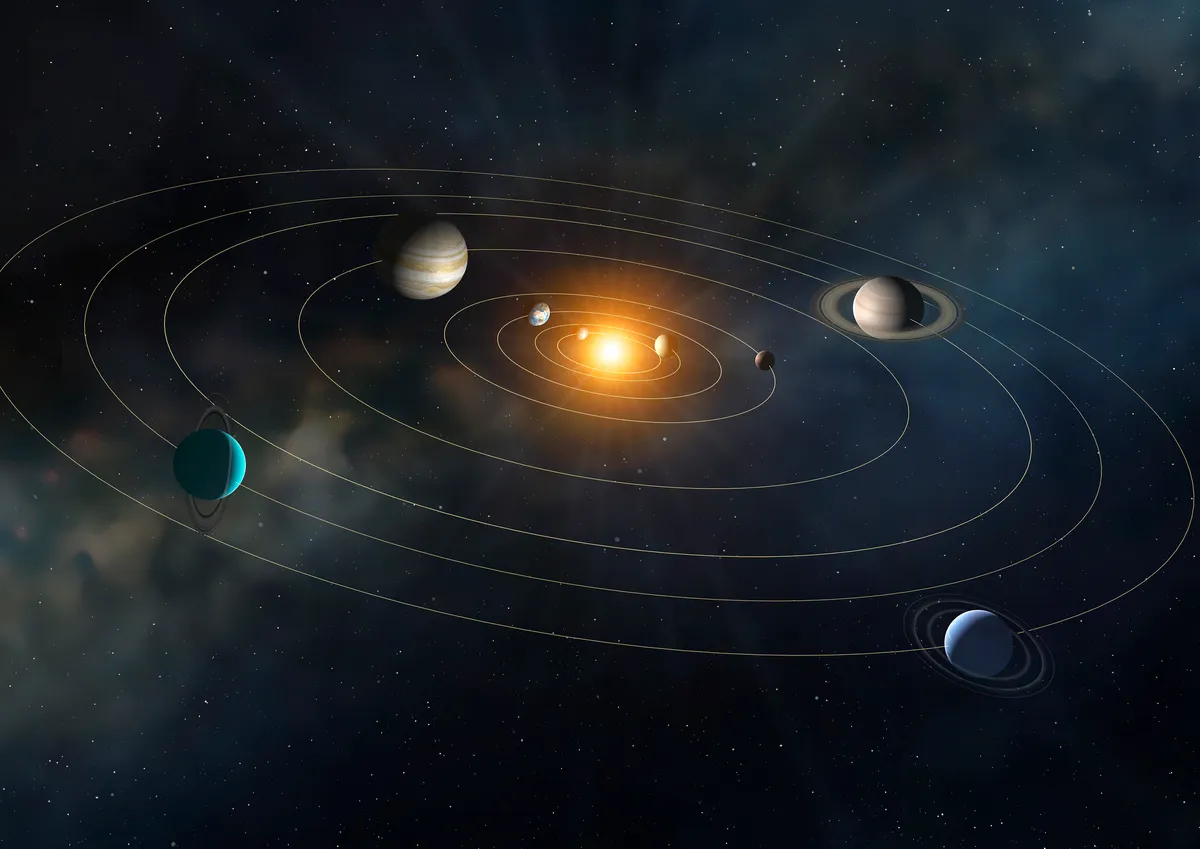
They've concluded that the gas giant played a major role in shaping the planets that orbit our Sun.
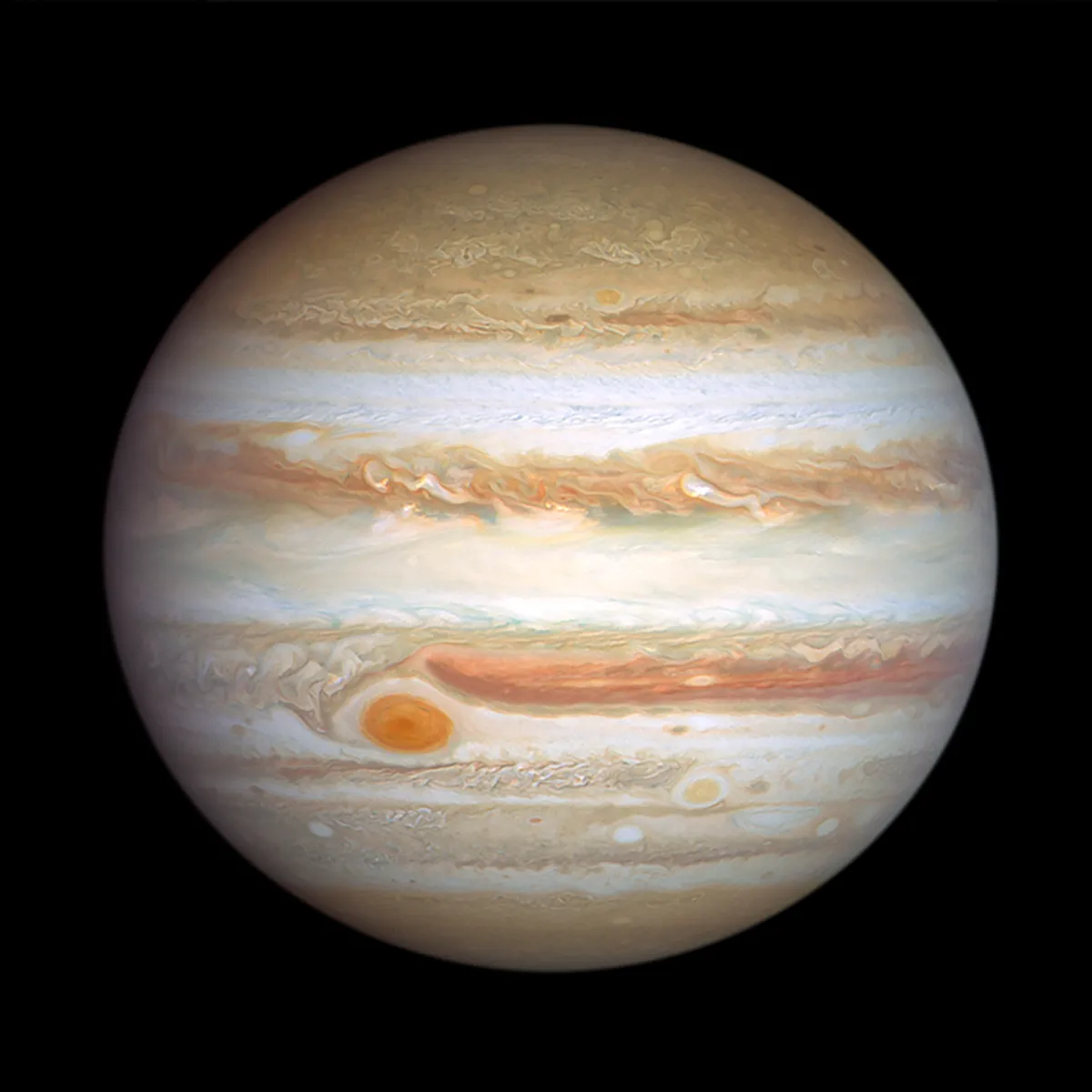
Jupiter was a wrecking ball around the young Sun
Planetary scientists André Izidoro and Baibhav Srivastava, from Rice University, Houston Texas, USA, have been investigating how the very young Jupiter shaped the early Solar System.
They found evidence that the young gas giant carved out rings and gaps in the dusty disc that surrounded the newly-formed Sun.
Computer simulations created by the the team show that Jupiter’s rapid early growth in the Solar System's history destabilised the Sun’s disc.
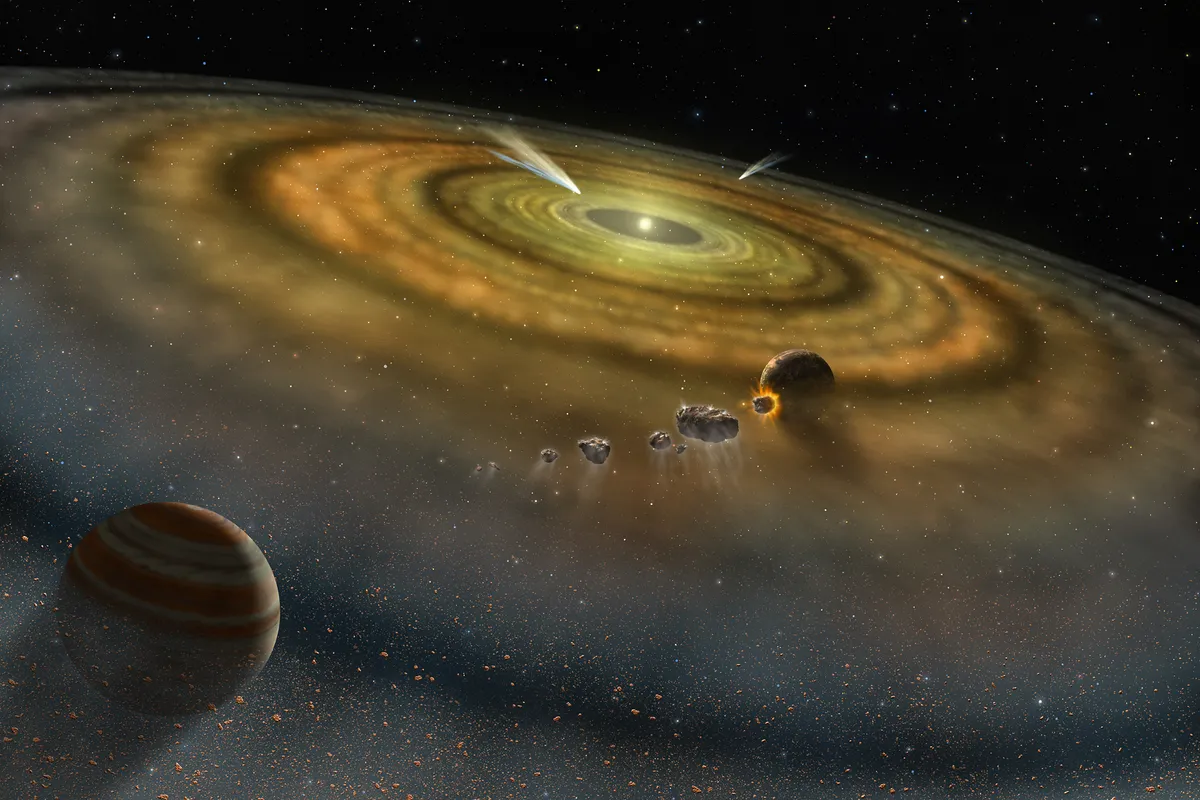
The immense gravitational force of the young planet sent ripples through the disk, creating what they call 'cosmic traffic jams'.
This prevented some small particles from spiralling into the Sun.
Instead, these particles grouped together and formed the seeds of the planets that we see today.
But there's a twist, and one that could help solve a long-standing Solar System mystery.

Understanding the remnants of the Solar System's formation
Meteors and meteorites are leftover ingredients from which our Solar System formed, and studying these space rocks today gives scientists an insight into how the planets formed and evolved.
The team say the planetary seeds that formed as a result of Jupiter rescuing them from falling into the Sun, were not the Solar System’s original building blocks.
Instead, these particles belong to a second generation, born later in the Solar System's history.
Their emergence coincides with chondrites, a type of stony meteorite.
"Chondrites are like time capsules from the dawn of the Solar System," says Izidoro, assistant professor of Earth, environmental and planetary sciences at Rice.
"They have fallen to Earth over billions of years, where scientists collect and study them to unlock clues about our cosmic origins.
"The mystery has always been: Why did some of these meteorites form so late, 2 to 3 million years after the first solids?
"Our results show that Jupiter itself created the conditions for their delayed birth."

Chondrites are some of the most primitive materials available to scientists.
The first meteorites were blasted by heat and radiation from the Sun and so lost many of their primordial, pristine characteristics.
Chondrites, on the other hand, better preserve pristine Solar System dust and molten droplets called chondrules.
"Our model ties together two things that didn’t seem to fit before – the isotopic fingerprints in meteorites, which come in two flavours, and the dynamics of planet formation," says Srivastava, a graduate student working in Izidoro’s lab.
"Jupiter grew early, opened a gap in the gas disk, and that process protected the separation between inner and outer Solar System material, preserving their distinct isotopic signatures.
"It also created new regions where planetesimals could form much later."

How Jupiter saved Earth
As astronomers discover more planets beyond our Solar System, known as exoplanets, these distant systems can be compared with our own, to tell us more about how usual or unusual we are, compared to the rest of the Galaxy.
One mystery that's arisen is why Earth, Venus and Mars are clustered around 1 astronomical unit from the Sun, rather than falling into the Sun, as is seen in other, more distant systems.
The team say the young Jupiter cut off the flow of gas material towards the inner Solar System, stopping young planets from migrating inwards.
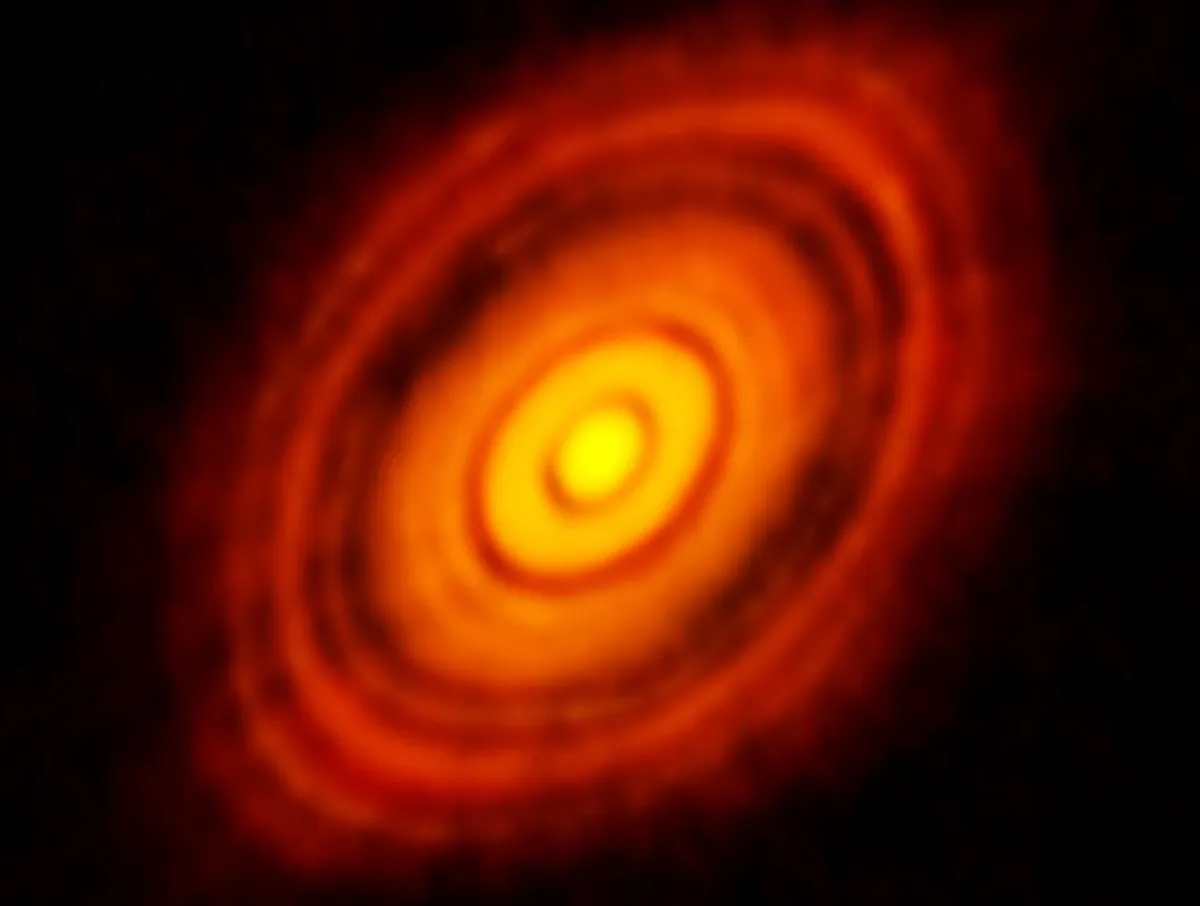
Instead of spiralling into the Sun, the young rocky planets of our Solar System – Earth included – were trapped in this warm region around the Sun, where they grew into the worlds that we see today.
This suggests that Jupiter enabled Earth not only to survive, but helped place it in the habitable zone around the Sun, where liquid water could pool on the surface, providing the conditions necessary for life to flourish.
"Jupiter didn’t just become the biggest planet, it set the architecture for the whole inner Solar System," Izidoro says.
"Without it, we might not have Earth as we know it."
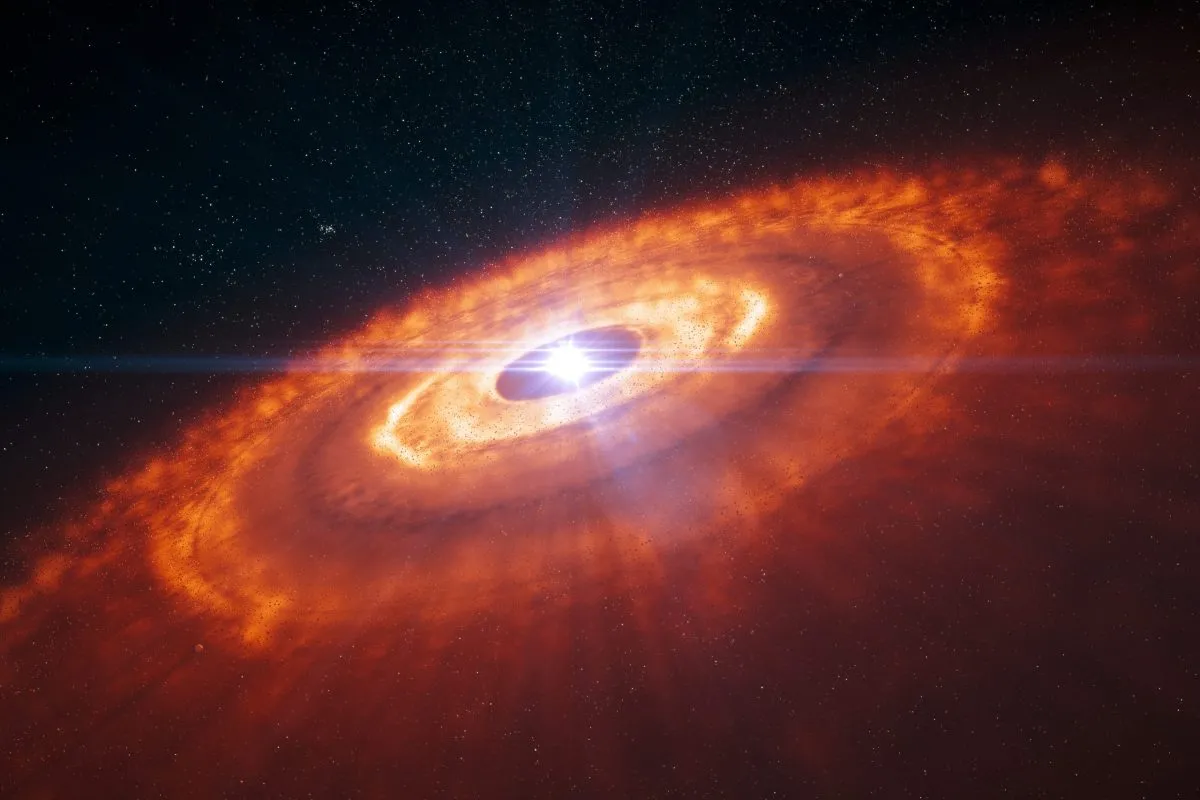
Looking beyond the Solar System
The team point out that images of young stars beyond our Solar System provide us with an insight into what the conditions might have been like around the young Sun.
Images captured with the Atacama Large Millimeter/submillimeter Array (ALMA) telescope in northern Chile show dusty discs around young stars, with ring-shaped gaps in them, likely caused by very young planets in orbit.
"Looking at those young disks, we see the beginning of giant planets forming and reshaping their birth environment," Izidoro says.
"Our own Solar System was no different. Jupiter’s early growth left a signature we can still read today, locked inside meteorites that fall to Earth."
Read the full paper at Science Advances

